The Department of Physics at Lehigh offers student research opportunities within several fields of physics. Learn more about our students' research and experiences below.
Nuclear and particle physics: Rosi Reed and Anders Knospe
The STAR Experiment at the Relativistic Heavy Ion Collider, Brookhaven National Laboratory
The collision of heavy nuclei (like gold) cause the nuclei, and even the protons and neutrons to come apart to form a quark-gluon plasma like that formed in the first microsecond just after the big bang.
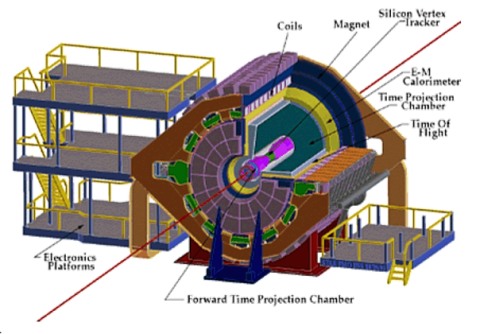
Atomic and Molecular physics: Ariel Sommer
Quantum many-body physics with ultracold atoms
In our experiments, we cool atoms to ultracold temperatures, close to absolute zero. At these low temperatures, a gas of atoms exhibits quantum mechanical phenomena, including Bose-Einstein condensation (BEC), Fermi degeneracy, and superfluidity. We study ultracold atomic gases to gain insight into phenomena like superconductivity and magnetism that occur in solids and liquids. Atomic gases allow us to create clean, defect-free samples with precisely known microscopic properties, enabling us to focus on the mechanisms through which macroscopic properties emerge from microscopic interactions.
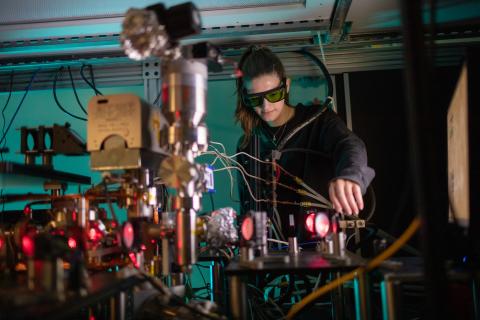
Fluid flow and lipid membranes: Aurelia Honerkamp-Smith
Honerkamp-Smith is interested in using fluid flow to move and sort membrane lipids and proteins. In a recently published paper, she used confocal video microscopy to reconstruct the 3D flow field throughout vesicles. The flow field can be used to measure the membrane viscosity. More recently, she is observing the transport of lipids and proteins across supported bilayers subject to a flow.
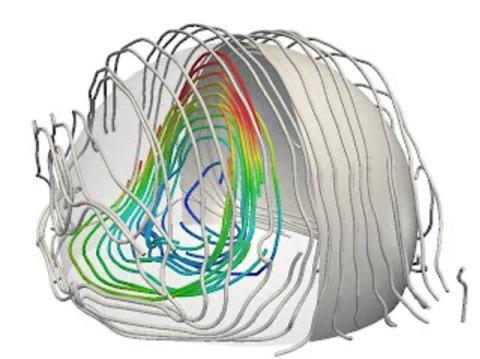
Non-linear optics: Ivan Biaggio
Light beams interact with one another when intense laser beams intersect in materials.
The Biaggio group develops new materials for non-linear optics and also uses pulsed lasers to study the properties of materials.
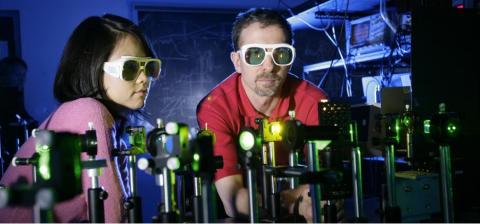
Laser tweezers and biophysics: Daniel OuYang
Particles with a high index of refraction have lowest energy in a high electric field, that is, at the focus of a laser beam.
This makes it possible to hold particles in a microscope and manipulate them with “laser tweezers.”
Applications include measuring fluid viscosity on a microscale, probing intra-cellular forces, and concentrating nano-particles in an “optical bottle.”
Theoretical biophysics: Dimitris Vavyonis
Cytokinesis
Cytokinesis is the final step in cell division when a dividing cell physically separates into two. During cytokinesis, animals and fungi assemble a contractile ring containing actin filaments and the motor protein myosin to separate into two daughter cells. Despite huge progress in identifying most major protein components, many aspects of the physical mechanism of contractile ring assembly and constriction remain unclear. To better understand this process, we are developing models of ring self-organization and constriction, in collaboration with experimentalists.
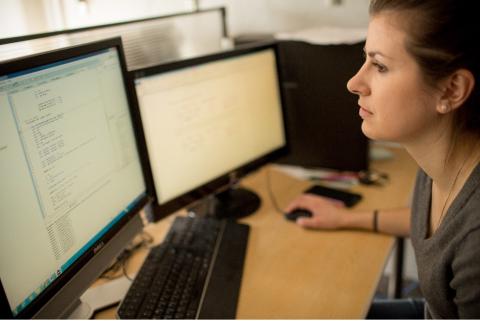
Astrophysics: Ginny McSwain and Josh Pepper
Classical Be Stars:
Be stars are a particular type of massive B stars that have emission disks around their equators. They also tend to be rotating very fast! The disks are probably a consequence of their fast rotation, so where did the rotation come from? The stars might have been born rotating fast, or they might have evolved into very fast rotators. The third possibility is that sometime in their past, a binary companion donated material to the B star and made it spin faster. The Be star phi Persei, illustrated to the left by Bill Pounds, is a classical Be star with an evolved, stripped down, helium star companion.
Optical materials: Volkmar Dierolf
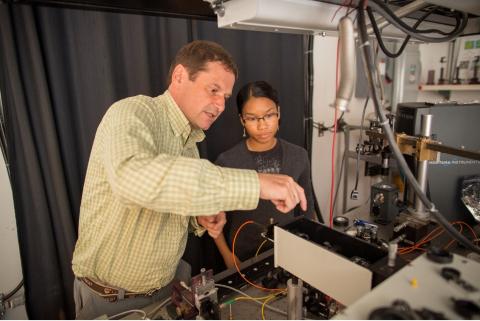
Additional Research
- String theory and gravitation: Sera Cremonini
- String theory and cosmology: Timm Wrase
- Theoretical condensed matter physics: Chinedu Ekuma and Bitan Roy
- Statistical mechanics: Yong Kim
- Electronic materials: Michael Stavola
- Physics education: Jerome Licini
